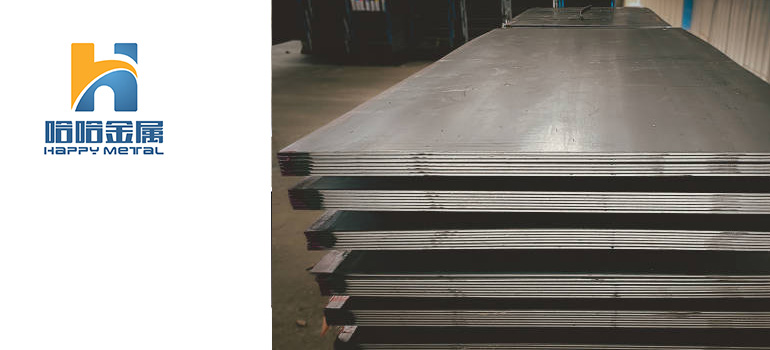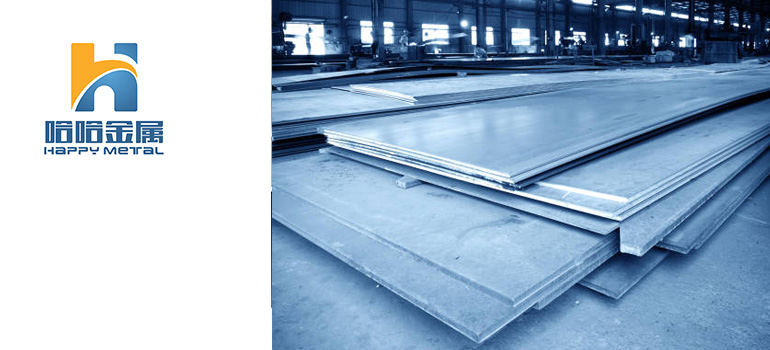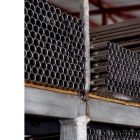Summary:
How Durable Steel Sheets Enhance Structural Integrity and Performance
The Key Advantages of Using Durable Steel Sheets in Construction
Technical Aspects of Durable Steel Sheets that Improve Structural Integrity
Performance Metrics of Durable Steel Sheets in Real-World Applications
Innovations and Advances in Durable Steel Sheet Technology
The Key Advantages of Using Durable Steel Sheets in Construction
In modern construction, durable steel sheets are highly valued for their superior physical properties and the numerous benefits they offer to building projects. Here are some of the key advantages of using durable steel sheets:
Enhanced Load-Bearing Capacity
One of the standout features of durable steel sheets is their remarkable load-bearing capacity. These sheets are designed to support significantly heavier loads compared to other materials, making them ideal for high-stress environments. Whether it’s the structural framework of a skyscraper or an industrial facility bearing heavy equipment, durable steel sheets provide the necessary support. For instance, many high-rise buildings rely on these steel sheets to ensure both stability and safety.
How Durable Steel Sheets Support Heavy Loads
The manufacturing process of durable steel sheets involves special alloy formulations and treatments that impart exceptional strength. This strength allows the steel sheets to effectively distribute and support the weight of structures, reducing the risk of damage due to excessive load.
Comparing Load-Bearing Performance with Other Materials
When compared to other building materials, durable steel sheets often outperform in terms of load-bearing capabilities. While concrete and wood have their own advantages, they generally do not match the load-bearing strength of durable steel sheets. This makes steel sheets a preferred choice for projects requiring high load capacity.
Real-World Examples of Load-Bearing Success
Practical examples highlight the success of durable steel sheets in load-bearing roles. For instance, large warehouses and industrial plants frequently use these steel sheets for their main support structures, ensuring both safety and reducing maintenance costs.
Improved Resistance to Environmental Factors
Another significant advantage is the superior resistance of durable steel sheets to environmental factors. They perform exceptionally well under various climatic conditions, whether exposed to intense sunlight, extreme temperatures, or high humidity. This resilience helps maintain their performance and longevity.
How Durable Steel Sheets Stand Up to Weathering
Durable steel sheets often undergo special treatments to withstand weather-related wear and tear. For example, protective coatings and corrosion-resistant treatments safeguard the steel from moisture and salt exposure, significantly extending their lifespan.
Corrosion Resistance and Maintenance Benefits
Due to their strong resistance to corrosion, durable steel sheets require less frequent maintenance. This resilience against various corrosive elements reduces the need for regular upkeep and replacement, leading to long-term cost savings.
In summary, durable steel sheets offer significant advantages in construction due to their superior load-bearing capacity and resistance to environmental factors. Whether in high-load applications or extreme conditions, these steel sheets provide reliable support and protection, ensuring long-lasting performance and safety in modern buildings.
Technical Aspects of Durable Steel Sheets that Improve Structural Integrity

When it comes to enhancing structural integrity in construction, the technical attributes of durable steel sheets play a crucial role. Their design, composition, and treatment processes contribute significantly to their effectiveness in reinforcing structures. Here’s a closer look at the technical aspects that make these steel sheets indispensable for robust and reliable construction:
Material Composition and Strength
One of the primary factors contributing to the structural integrity of durable steel sheets is their material composition. The strength and durability of these sheets stem from their unique alloying elements and the precision of their manufacturing processes.
Key Elements That Enhance Durability
Durable steel sheets are typically made from high-quality steel alloys that include elements such as carbon, manganese, and chromium. These elements enhance the steel’s hardness and strength, making it capable of withstanding significant stresses without deforming or failing. For instance, the addition of chromium improves the steel’s resistance to corrosion, which is vital for long-term structural performance.
The Role of Alloying in Steel Sheets
Alloying plays a crucial role in defining the properties of steel sheets. Different alloying elements can be added to achieve specific characteristics. For example, adding nickel can improve toughness and resistance to extreme temperatures, while molybdenum can increase strength and resistance to wear. The careful selection of these alloying elements ensures that the steel sheets meet the required performance standards for various applications.
Comparative Strength of Various Steel Grades
Steel sheets come in various grades, each designed for specific applications. Higher-grade steel sheets, such as those categorized as high-strength low-alloy (HSLA) steels, offer superior performance compared to standard carbon steels. This increased strength translates to better load-bearing capacity and enhanced durability, making high-grade steel sheets ideal for critical structural components.
Structural Design and Engineering Benefits
The integration of durable steel sheets into structural designs offers several engineering advantages. These benefits stem from their ability to contribute to the overall stability and resilience of construction projects.
How Design Integrates with Durable Steel Sheets
In structural design, durable steel sheets are often used as part of composite systems or structural frameworks. Their ability to support and distribute loads efficiently allows engineers to create more flexible and innovative designs. For example, steel sheets are commonly used in the construction of steel-frame buildings, where they provide essential support and enhance the overall stability of the structure.
Enhancing Stability Through Advanced Engineering
Advanced engineering techniques leverage the strengths of durable steel sheets to improve structural stability. Techniques such as using steel sheets in conjunction with reinforced concrete or integrating them into modular construction systems help optimize the performance of the overall structure. These methods can result in more robust and earthquake-resistant buildings.
Examples of Effective Design Applications
Practical applications of durable steel sheets in design include their use in bridges, high-rise buildings, and industrial facilities. For instance, in bridge construction, steel sheets are used to create load-bearing beams and supports that withstand the stresses of traffic and environmental conditions. Similarly, in high-rise buildings, steel sheets contribute to the strength of the building’s core and structural frame.
In conclusion, the technical aspects of durable steel sheets, including their material composition, alloying elements, and integration into structural designs, significantly contribute to their ability to enhance structural integrity. By understanding and utilizing these technical attributes, engineers and builders can ensure that their constructions are both strong and resilient, capable of withstanding the demands of modern infrastructure.
Performance Metrics of Durable Steel Sheets in Real-World Applications
Durable steel sheets are renowned for their exceptional performance across a wide range of real-world applications. Understanding their performance metrics helps in evaluating their effectiveness and suitability for various construction projects. Here’s an in-depth look at how durable steel sheets perform in practical scenarios:
Durability in Different Construction Scenarios
The durability of steel sheets is a critical factor in determining their performance in diverse construction settings. Their ability to withstand various stressors and environmental conditions makes them a preferred choice for many applications.
High-Stress Environments and Performance
Durable steel sheets are designed to excel in high-stress environments, such as industrial facilities, heavy machinery enclosures, and load-bearing structures. For example, in manufacturing plants, where equipment and machinery generate significant vibrations and mechanical stresses, these steel sheets provide reliable support and maintain structural integrity over time.
Long-Term Benefits in Various Structures
The long-term performance of durable steel sheets is evident in their resistance to deformation and wear. In structures like bridges and high-rise buildings, steel sheets maintain their shape and strength even after years of use. This long-term durability reduces the need for frequent repairs or replacements, contributing to lower lifecycle costs and improved safety.
Analysis of Case Studies
Real-world case studies illustrate the effective use of durable steel sheets. For instance, steel sheets used in offshore platforms are exposed to harsh marine conditions, including saltwater and high winds. The success of these applications demonstrates the steel sheets’ ability to resist corrosion and maintain performance under extreme conditions.
Cost-Effectiveness and Longevity
When evaluating the performance of durable steel sheets, cost-effectiveness and longevity are key metrics that highlight their value in construction projects.
Cost Savings Over Time with Durable Steel Sheets
Although durable steel sheets may have a higher initial cost compared to some other materials, their longevity and reduced maintenance requirements lead to significant cost savings over time. Their resistance to wear and environmental damage means fewer repairs and replacements are needed, translating to lower overall costs for property owners.
Comparing Lifecycle Costs with Other Materials
Comparing the lifecycle costs of durable steel sheets with other materials such as wood or concrete reveals their economic advantages. While wood may be less expensive initially, it often requires more maintenance and has a shorter lifespan. Concrete, while durable, can be more costly to repair and reinforce. Durable steel sheets offer a balanced approach, providing durability and cost savings throughout their service life.
Financial Benefits in Large-Scale Projects
In large-scale projects, such as commercial buildings or infrastructure developments, the cost benefits of using durable steel sheets are magnified. Their ability to reduce maintenance and operational disruptions translates into significant financial savings. Additionally, their strength and reliability contribute to the overall success and efficiency of large-scale projects.
Durability and Performance Under Extreme Conditions
Understanding how durable steel sheets perform under extreme conditions is crucial for applications in challenging environments.
Performance in Extreme Temperatures
Durable steel sheets are engineered to perform well under extreme temperature variations. Whether exposed to high heat in industrial processes or freezing temperatures in cold climates, these steel sheets maintain their structural properties and prevent issues such as warping or brittleness.
Resistance to Environmental Factors
Environmental factors such as moisture, chemicals, and UV radiation can impact material performance. Durable steel sheets are often treated or coated to enhance their resistance to these factors. For example, in chemical processing plants, protective coatings prevent corrosion caused by exposure to harsh chemicals.
In summary, the performance metrics of durable steel sheets, including their durability in various scenarios, cost-effectiveness, and resilience under extreme conditions, underscore their value in real-world applications. By understanding these metrics, builders and engineers can make informed decisions and ensure that their projects benefit from the superior performance and reliability of durable steel sheets.
Innovations and Advances in Durable Steel Sheet Technology
The field of durable steel sheet technology has seen significant innovations and advancements, driving improvements in performance, durability, and sustainability. These advancements are crucial for meeting the evolving demands of modern construction and industrial applications. Here’s an overview of the latest innovations and how they enhance the functionality of durable steel sheets:
Recent Technological Developments
Recent developments in steel sheet technology have focused on enhancing strength, durability, and versatility. These innovations address various challenges and contribute to the superior performance of modern steel sheets.
New Manufacturing Techniques for Enhanced Durability
Advances in manufacturing processes, such as the development of advanced hot-rolling and cold-rolling techniques, have led to improved mechanical properties of steel sheets. Techniques like Ultra High-Strength Steel (UHSS) production and Continuous Annealing Processes (CAP) help achieve higher strength-to-weight ratios and better formability. These improvements make steel sheets more resistant to wear and tear, extending their lifespan and reliability.
Innovations in Coating and Treatment Processes
Coating technologies have advanced significantly, enhancing the corrosion resistance and aesthetic appeal of durable steel sheets. New coatings, such as advanced polymer and ceramic coatings, offer superior protection against environmental factors like moisture and UV radiation. Additionally, treatments like galvanization and aluminization provide long-lasting barriers against corrosion, making steel sheets suitable for harsh environments.
Development of Smart Steel Sheets
Recent innovations include the integration of smart technologies into steel sheets. Smart steel sheets equipped with sensors and embedded electronics can monitor structural health in real-time. These sensors detect changes in stress, temperature, and other parameters, allowing for proactive maintenance and enhanced safety in critical applications.
Sustainability and Eco-Friendliness
Sustainability has become a key focus in the development of durable steel sheets. Innovations in this area aim to reduce the environmental impact of steel production and enhance the recyclability of steel products.
Eco-Friendly Manufacturing Practices
Modern steel production processes are increasingly incorporating eco-friendly practices to minimize environmental impact. Techniques such as Electric Arc Furnace (EAF) steelmaking and the use of recycled steel scrap reduce energy consumption and carbon emissions. Additionally, improvements in energy efficiency and waste management during production contribute to a more sustainable manufacturing process.
Recycling and Reusability of Durable Steel Sheets
Steel is inherently recyclable, and advancements in recycling technology have further improved the efficiency of steel recycling processes. Durable steel sheets can be recycled multiple times without loss of quality, making them a sustainable choice for construction. Recycled steel is often used in new steel sheet production, closing the loop in the material lifecycle and reducing the demand for raw materials.
Reducing Environmental Impact
Innovations in steel sheet technology also focus on reducing the overall environmental impact of steel products. This includes efforts to lower the carbon footprint of steel production and enhance the performance of steel sheets in applications that contribute to energy efficiency and environmental sustainability, such as green building projects.
Future Trends in Steel Sheet Technology
Looking ahead, several emerging trends are expected to shape the future of durable steel sheet technology. These trends reflect ongoing research and development aimed at addressing the challenges of modern construction and industry.
Advanced Alloying and Composites
Future developments may include new alloy compositions and composite materials that offer even greater strength, flexibility, and resistance to extreme conditions. Research into high-performance alloys and composite steel sheets is likely to lead to innovations that further enhance the capabilities of steel products.
Integration with Digital Technologies
The integration of digital technologies, such as artificial intelligence (AI) and machine learning, into steel sheet production and application is an emerging trend. AI-driven analytics and automation can optimize manufacturing processes, improve quality control, and enable predictive maintenance based on real-time data.
Enhanced Environmental Certifications
As sustainability becomes increasingly important, there will likely be a greater emphasis on environmental certifications and standards for steel products. Innovations in steel sheet technology will include improved certification processes and the development of products that meet stringent environmental and performance criteria.
In summary, the field of durable steel sheet technology is evolving rapidly, with significant innovations and advancements enhancing performance, sustainability, and functionality. From new manufacturing techniques and coating technologies to eco-friendly practices and future trends, these developments ensure that durable steel sheets continue to meet the demands of modern construction and industrial applications effectively.




